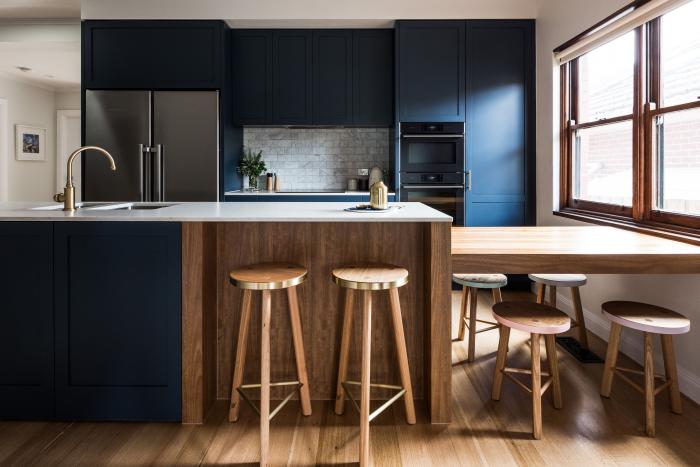
Jenefer Gordon (Eat Bathe Live) - Winner KBDi Kitchen Designer of the Year Vic/Tas
With the wellness movement gaining momentum in homes across the country, and an increasing green conscious within many Australian families, the Kitchen and Bathroom Designers Institute (KBDi) is often asked about ways in which to design ‘healthy’ or ‘green’ kitchens.
KBDi suggests that all 'healthy' kitchens should also be ‘green’, and recommends a three-tiered approach to all good design with a focus on caring for
(1) our health - Design for Wellness,
(2) the planet - Green Design, and
(3) each other - Universal Design.
In this feature, KBDi shares its kitchen design recommendations for each.
Design for Wellness
A healthy kitchen is designed to encourage healthy habits, such as regularly preparing nutritious meals and eating fresh, whole foods. It should also be an easy to clean, chemical-free environment.
- A well-designed kitchen will cater to the cooking styles most suited to your dietary preferences and allow for the optimum storage of produce and pantry goods. For example, a vegetarian family will require less freezer space (no meat or poultry to preserve) and plenty of dark, cool storage for fresh vegetables, bulk legumes and pulses. A gluten-free family won’t need storage for bread rolls and highly processed foods, but they will need room for a range of wheat-alternative flours. A paleo family will be looking for the best grills and cooktops for their everyday meals, and more space for dairy alternatives. Make sure your designer is aware of your dietary needs from the very beginning and help them understand any food preparation concerns you may have.
- A healthy kitchen is free of indoor air contaminants – chemical and biological - and has pure, filtered water on tap. The kitchen cabinets should be manufactured from zero or very low VOC materials, and benchtops should be simple to maintain without the use of chemical cleaners or sealers.
- Easy access to a well-planned and maintained kitchen garden is a design advantage, too. A variety of herbs and vegetables within walking distance to the kitchen will encourage creative cooking, with the nutritional benefits of freshly picked greens.
Green Design
Green design will support eco-friendly habits such as:
- Reducing packaging - when a kitchen has ample storage space for bulk buys of staple ingredients (flour, rice etc.), the opportunity to reduce packaging is more significant.
- Minimising food waste - when pantry contents are easy to view and access (e.g. shallow pantry shelves), food is less likely to pass its use by date in the dark depths of your cabinets!
- Recycling and composting - allowing space for recycling bins and organics bins (for worm farms or chicken scraps) or a Bokashi bin makes recycling and composting more convenient.
Universal Design
Universal design is an approach to planning that accommodates a variety of needs for a range of abilities, including those of children, the elderly and people with diverse physical capabilities. In the kitchen, some Universal Design considerations are:
- Providing kitchen benchtops at both standing and sitting heights: this helps those with limited standing endurance, temporary or long-term mobility impairment, and encourages engagement with small children.
- Implementing the principles of the work triangle: by placing the refrigerator, cooktop and sink in an un-interrupted 'triangle', typical cooking processes can be carried out with ease.
- Considering ergonomics in the kitchen: wall ovens and microwaves should be mounted at safe and easily accessible heights – wall mounts are preferred over under-bench locations, but the base of any units should be no higher than 1,250mm from the floor.
- Selecting appliances with audible/visual cues: a vision impaired person will appreciate the 'beeps' and warnings of a cooktop, while a hearing-impaired person would find a visible 'flash' alert helpful. Consider the needs of the household and aim to accommodate.
A qualified and experienced kitchen designer will be highly conscious of the ergonomic practicalities of kitchen design; KBDi encourages homeowners to find a design professional at kbdi.org.au.